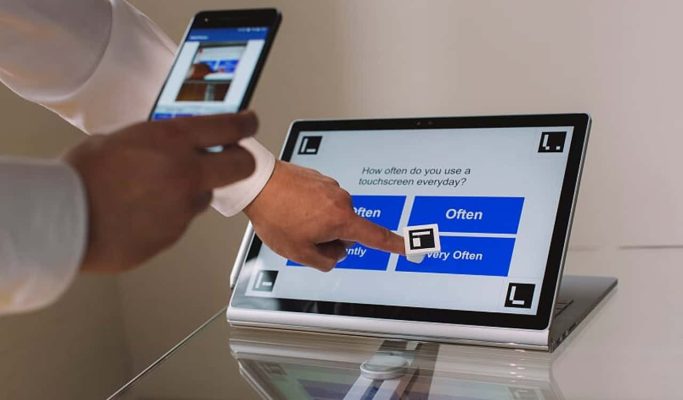Touchscreen Solutions, Touchscreen News
Study: Touchscreens May Benefit Visually Impaired Users
An estimated 285 million people are believed to be visually impaired, 39 of million of whom are classified as blind, according to data by the World Health Organization (WHO). But a new study has found that touchscreen devices can benefit individuals with visual disabilities.
For the study, researchers from Canada’s Concordia University recruited 100 men and women, ages 24 to 97. Half of these participants were suffering from aage-related macular degeneration (AMD or ARMD) — a degenerative disease that leads to vision loss. Researchers then asked the participants various questions, testing their vision accuracy using an iPad and magnification device. Next, researchers compared the results to determine how the participants were able to read on the various devices.
Researchers discovered that participants had the most trouble reading small-to-medium-sized text, which of course isn’t much of a surprise. Something that did surprise researchers, however, was the impact that touchscreen devices had on participants’ ability to read as a whole. Regardless of the device, all touchscreens had a positive improvement on participants’ ability to read. Furthermore, researchers noted that touchscreen tablets and similar devices do not carry the same stigma that’s commonly associated with magnification devices, allowing people with visual disabilities to blend in more easily.
As noted by Elliott Morrice, an iPad worked “just as well” in terms of magnification as a closed-circuit television or similar device.
“What was interesting to note was that it didn’t matter what technology was used to do the magnification: an iPad worked just as well as a traditional device like a closed circuit television system (CCTV),” said Elliott Morrice, the study’s lead author.
So, what does this study mean for the millions of men, women and children who suffer from visual disabilities? In short, touchscreens can enhance the experience for people with visual disabilities by supporting beneficial features like magnification. Instead of being forced to carry around a physical, tangible magnifying glass, for instance, users can simply carry a tablet. Most touchscreen tablets today are made with a built-in magnification feature, allowing users to zoom in — and zoom out — of various areas. This eliminates the need for a dedicated magnifying glass, which in turn helps users with visual disabilities to see more clearly. Of course, this is just one of the many ways in which touchscreen technology is changing our world for the better.

